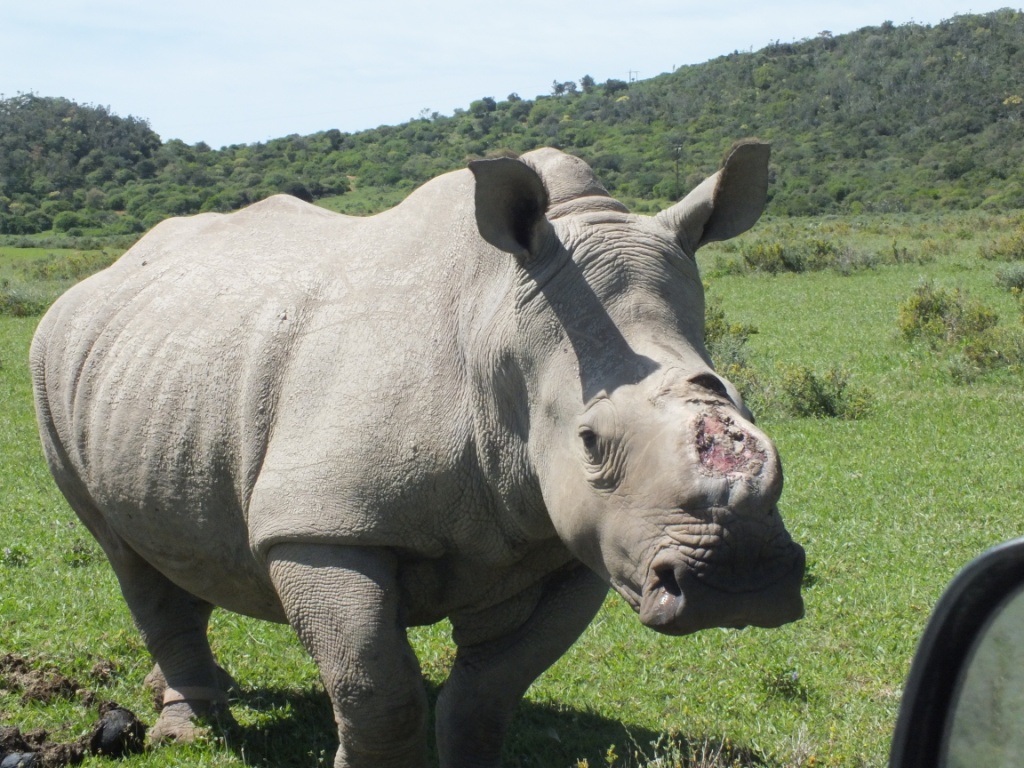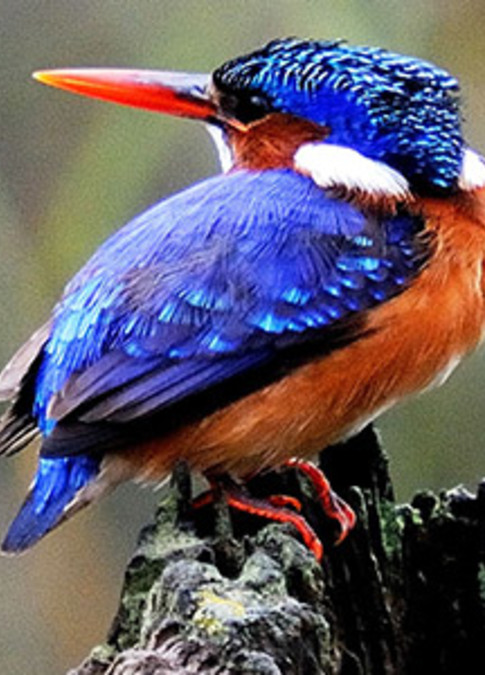Thandi's Story - Part IV - Kariega Game Reserve
The last of a four part blog on the poaching of Thandi and Themba at Kariega Game Reserve South Africa, of the people closest to them, and of their path to recovery and struggle in the fight against poaching.
Find Part I-III here
Courage in the loss of hope
Part IV
By Lauren Daisy Flynn
The rhino’s horn is composed nearly entirely of keratin with calcium and melanin in the middle. The calcium, like in our bones, strengthens the horn. The melanin, like in our skin, protects the core from the dangers of UV rays. The keratin, like in our nails and hair, composes the entirety of their horn.
Like us when we cut our nails or hair we feel no pain, they feel no pain when their horn breaks. Breaking their horn is part of their nature. The white cow typically uses her horn to protect and defend her young. The bulls use theirs to battle against their attackers. Together they knock horns during interaction before mating. Just as easily as a horn can break, it can regrow, just like our nails.
As a deterrent Kariega Game Reserve, like many of their Eastern Cape neighbours, has taken the decision to safely dehorn their rhinos. In doing so their rhinos are less favourable to poachers, although dehorned rhino’s can still be a target due to one or two kilograms of horn that remains behind as it is beneath the skin. This stub is on average seven to ten percent of the entire horn. That’s two kilograms of fatal profit. Dehorning is a strange reality to understand and is a difficult decision for rhino owners to make, however Kariega Game Reserve must take every possible step it can in order to protect its rhino’s from a terrible fate of poaching.
Dehorning is not a solution to rhino poaching on its own, it is a preventive method. Dehorning must be coupled with extensive anti-poaching and monitoring efforts. In the absence of security measures, regardless of the presence of a full horn, rhinos are under a high risk of being poached.
A dehorned rhino can still be poached for the stub, to prevent it from potentially interfering in the poaching of horned rhinos and (it is rumoured) out of vengeance to owners who dehorn their rhinos. Until the Department of Environmental Affairs has decided upon a series of solutions, guardians of the rhinos will continue to find ways to save their rhinos before they are completely extinct.
In a media release by the Department in September 2013 already 618 nationally have been reported poached. Last year in 2012 when Themba, Thandi and Bull 84 had their horns stolen, the year’s total reached 668 in South Africa. Already this year the numbers are evidently growing to surpass 2012 and be the highest amount experienced yet.
South Africa possesses about 70 percent of the world’s rhino population making South Africa a prime target to poachers. According to latest statistics the South African rhino population currently stands at 10,000 and is dropping by the week.
*****
Thandi is one of the 10,000 rhinos, but she is not another statistic. She has inspired people of South Africa and across the world to join the movement, to spread the awareness, to donate to campaigns, and to do what they can. Her story has made history as one of the first rhinos, and still one of very few, to survive the poachers’ greed.

People criticised the reserve and Dr Fowlds for trying to keep Thandi and Themba alive. Some believed it was their responsibility to help them die so they did not suffer physically and psychologically any longer. But despite the obstacles and expectations imposed onto the game reserve and Dr Fowlds, Thandi’s story lives on.
Sceptics said Thandi was a waste of a rhino. Without a horn and the psychological trauma she endured it was suspected that she would never mate again, thus rendering her a “waste”. But her sheer determination to not only live, but to be a rhino again, is a true-life miracle.
She should have died like Bull 84 and Themba, but she survived. Since 2 March 2012, Thandi has undergone countless procedures to rid infection and heal her wounds. She has been left alone and given back a bit of normal life with the introduction of another bull on the reserve to heal her mind and soul.
The name Thandi was given to her the day she was poached. Kariega Game Reserve said they chose it together because it means courage in IsiXhosa. Through the unpredictability and suffering, her courage to keep living defeated the poachers. In courage and strength, she won.
Added to her accolades as one of the first rhinos to survive, she is also the first rhino to undergo ground-breaking skin graft procedures carried out by a team of vets and a human plastic surgeon. They needed to toughen her scarred skin after reopening through suspected spirited interaction with the bull. Kariega were slated again, this time for allowing her to be vulnerable against a dehorned bull.
But against all odds, a month ago she was spotted mating with the bull. If the mating is successful, she will give birth to a calf around next year’s Christmas time.
Shaun cannot hold back his joy and absolute relief. Finally, the end to her distressing story is the light of a promising future standing before her, “It will be an amazing end to a traumatic story. Thandi creating life will be bigger than the fact she was poached.”









